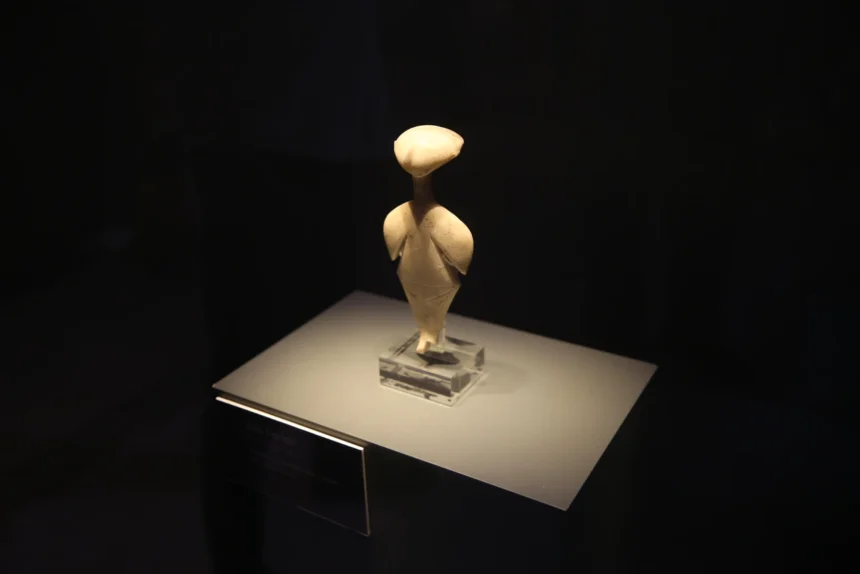Turkey recently celebrated an important milestone in the preservation of its cultural heritage: the return of a 6,500-year-old marble artifact that had been smuggled out of the country. This artifact, dating back to 4500 BC and representative of the Middle Chalcolithic period, is now on display at the Troy Museum as part of the Çanakkale Cultural Route Festival.
The return of the artifact, known as a Kilia-type idol, was the result of a successful collaboration between the Turkish and US authorities. Turkey’s Deputy Minister of Culture and Tourism, Batuhan Mumcu, highlighted the crucial role of the ministry’s anti-smuggling department, which has been committed to bringing back important pieces of Turkish cultural heritage, collaborating closely with US prosecutors specializing in smuggling cases.

Mumcu said: “We will reveal the cover of this artifact, which our ministry’s Department of Antiquities and Museums has successfully returned to its homeland. Over the years, we have had the opportunity to bring back many artifacts from abroad. I want to thank our general directorate and all our colleagues who work on smuggling issues. It brings us immense joy to exhibit our returned artefacts and bring back the cultural heritage of all the civilizations that once thrived in our region.”
During the exhibition’s opening event, Mumcu highlighted Turkey’s ongoing commitment to protecting its cultural assets and the joy of being able to display repatriated artifacts, reinforcing the historical and cultural value of these objects.
Funda Kumru Koşar, an archaeologist involved in the repatriation efforts, stressed that Turkey is determined to prevent the theft of its cultural treasures. She explained: “Our country will not tolerate attempts to steal its cultural assets” and that there is no escape for those who try to remove Turkey’s cultural heritage from its lands. Koşar added: “With this exhibition, we aim to raise awareness in this field. This is the fourth exhibition we are organizing. With the support of our minister, you will see cultural artifacts smuggled out of Troy and returned to our soil, as well as artifacts recovered through successful law enforcement operations in the Çanakkale region. The fact that this exhibition is being held in Troy is significant because at the end of the 19th century, during the Ottoman period, serious legal battles and national and international press campaigns were conducted to return the Trojan artifacts to their rightful land. Following the ancient traditions of the Ottoman period, we are determined to ensure that the artifacts belonging to our country remain here and that those taken abroad are returned, with the support of our minister.”
The exhibition entitled “Refugee Aeneas: Traces of Migration from Myths to the Present” is part of the fourth in a series of events aimed at preserving Turkish cultural heritage. It not only presents repatriated artifacts but also pieces recovered from the Çanakkale region through law enforcement operations. The event was attended by leading figures such as Selim Terzi, director of the Department of Living Heritage and Cultural Events, and Professor Rüstem Aslan, head of the Troy excavation team, among others.
The ceremony also included special recognition for Onur Özcan Çimen, who found a 2,000-year-old Roman coin and donated it to the museum. In gratitude, he was presented with a tablet. This tribute is an example of the encouragement given to citizens to help protect the country’s cultural heritage.

The Çanakkale Cultural Route Festival serves not only as a celebration of Turkey’s rich historical heritage, but also as a manifestation of the nation’s commitment to safeguarding these treasures for future generations.
Through such events, Turkey reinforces its position as the guardian of a priceless cultural heritage, ensuring that the artifacts found on its territory remain and return to their rightful place.
For more updates on Türkiye’s cultural heritage and upcoming events, visit the Canakkale Culture Route Festival.


